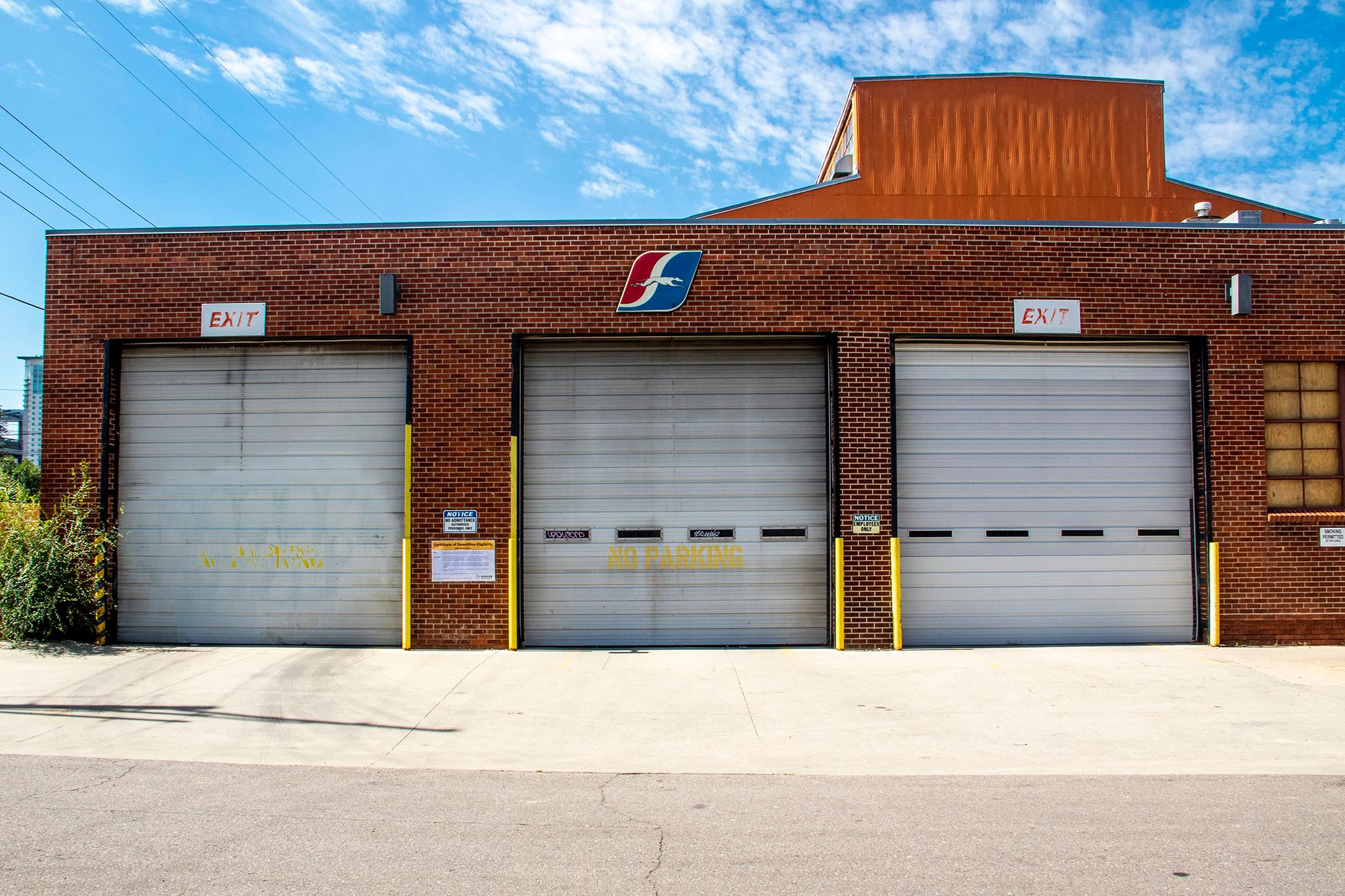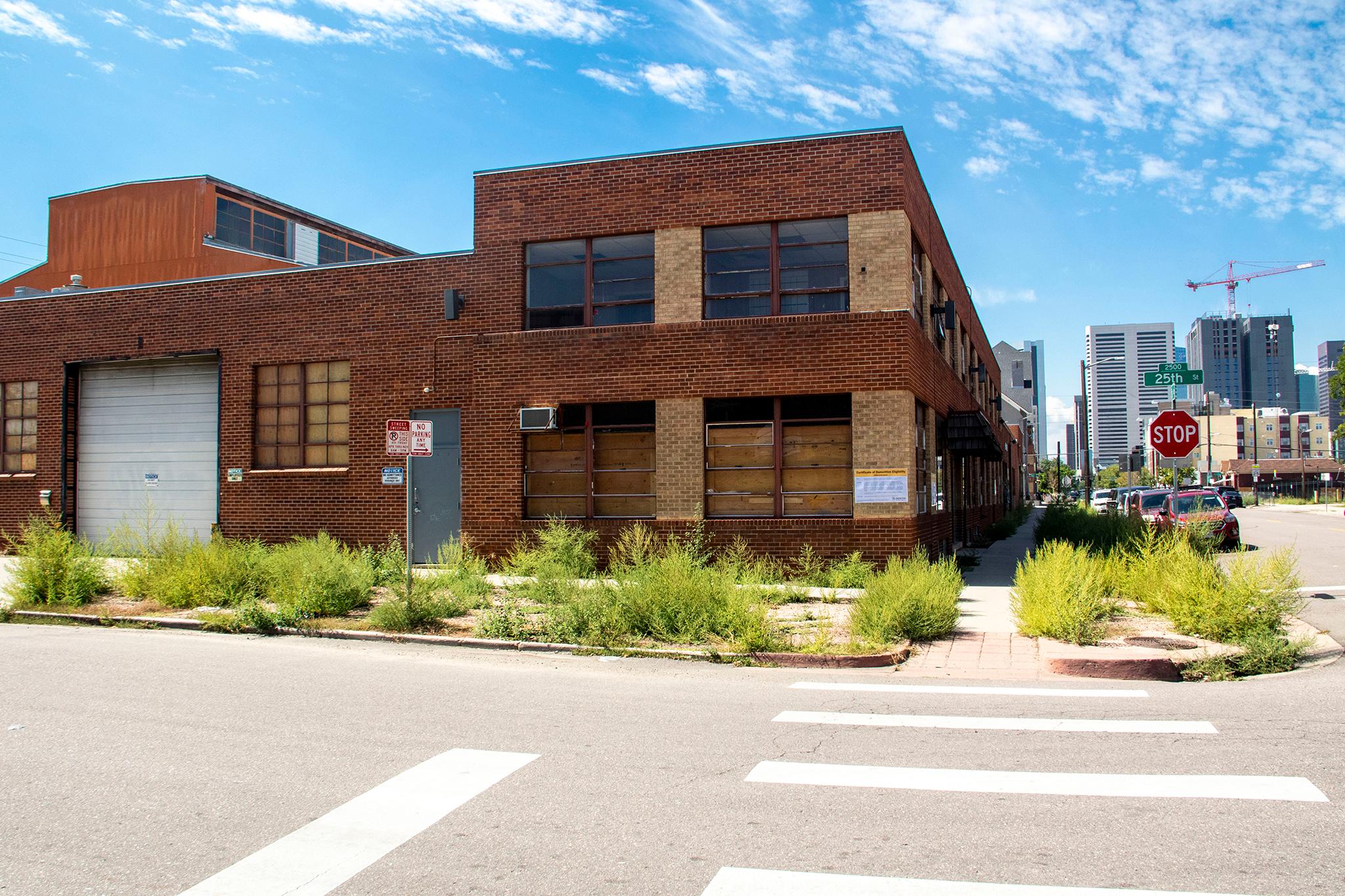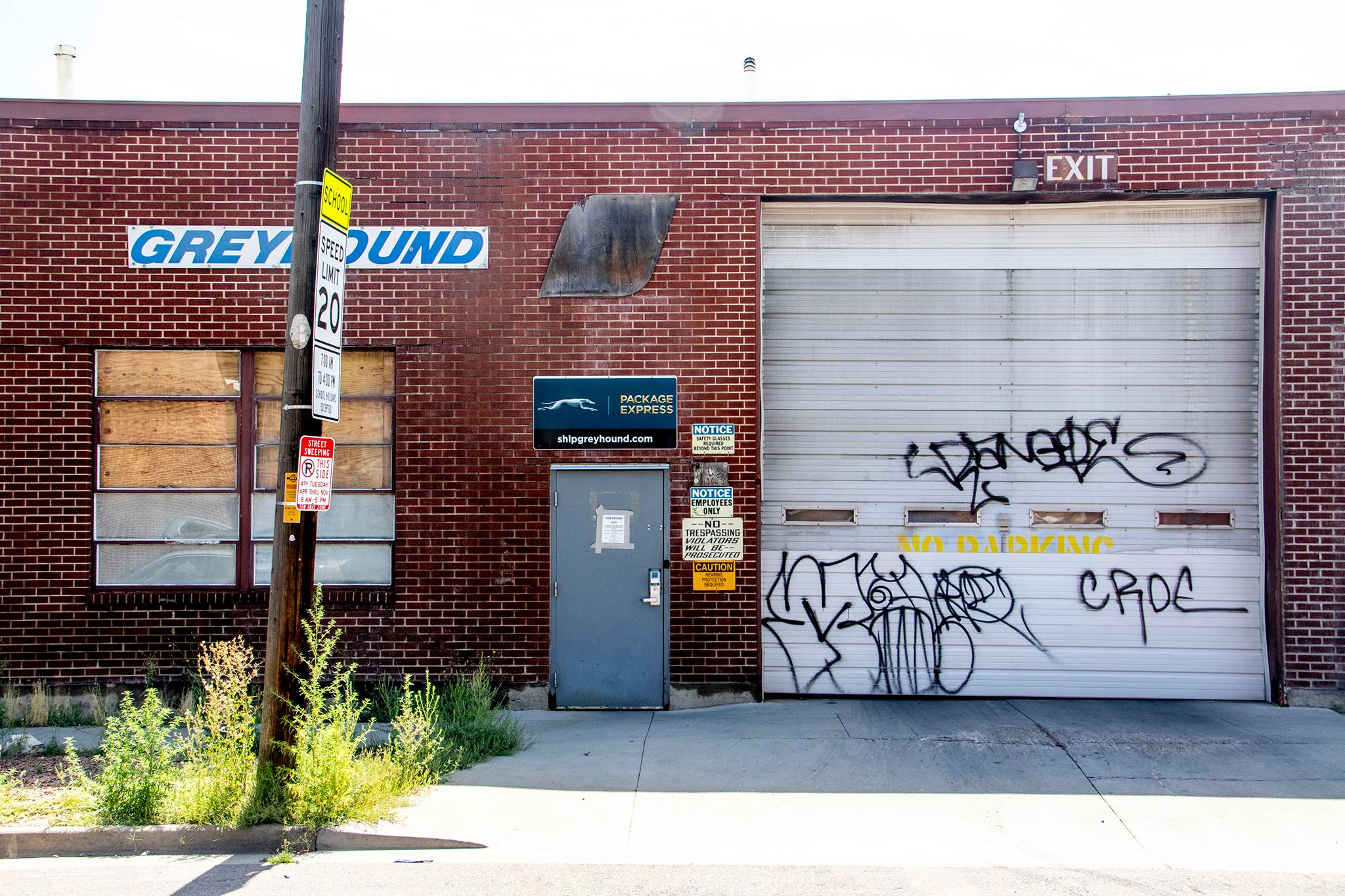The old Greyhound Bus Lines maintenance building at 2450 Curtis Street may be torn down to make way for an apartment complex -- if the city doesn't decide to make the brick warehouse a historic landmark first.
Back in June, the Denver firm Craine Architecture submitted plans to the city for a three-story 104-unit apartment building on the site, as part of the 25th and Curtis Street Redevelopment.
The building, owned by GLI Acquisition CO since 1988, would include 5,000 square feet of ground-floor retail and 115 below-ground parking spaces.
That plan is currently under review by the city.
In the meantime, on July 8, First Group Services, INC submitted an application for permission to demolish the current building.
Community Planning and Development received the application on July 27. By August 8, the agency had responded with its findings that the building was, indeed, eligible to be preserved as a landmark -- but only if the city and residents approve.
To decide whether it would be eligible to be saved, the city drummed up the building's history.
The structure currently at 2450 Curtis Street was built in 1947 by Cummins Diesel Sales of Colorado, a branch of the Cummins Diesel Engine Company in Columbus, Indiana. The architect is unknown.
"The company's first major commercial engine, the Model F, was offered through the Sears, Roebuck Company catalog in the 1920s," according to Landmark Preservation. "In 1931, Cummins debuted a diesel engine at the Indianapolis 500 that was fuel-efficient enough to run the entire race without a single pit stop. The Cummins racecar finished 13th out of 33 cars. Over the next couple decades, Cummins would continue to develop diesel engines for race cars as they experimented with ways to increase the speed and efficiency of their engines."

During World War II, the company pivoted to making diesel engines for military trucks, ships and electrical generators, explained Landmark Preservation. The company profited mightily, and by 1947 had expanded its operations and became a publically traded company. After the war and through the '50s, Cummins was making over half of the heavy-duty truck engines in the country and making moves in the racing scene.
The company opened its first Colorado shop and service center in 1942 and outgrew it fast. By 1947, Cummins opened its 2450 Curtis Street shop. For years, the building modeled various high-tech engines, and by the late fifties employed 90 people.
Around '62, the company decided to move on to another location, where it grew to become the leading diesel-engine producer in the United States.
After that, Continental Trailways, the bus company, bought 2450 Curtis Street for maintenance and storage. Trailways sold used buses to schools, churches and individuals who came from within a 1,000 mile radius, every 12 years or so, when the company rotated its fleet.
In 1987, when Greyhound bought out Trailways, the company continued to use the building for maintenance and storage, even after Greyhound moved out of its old station at 1055 19th Street, which was also slated for redevelopment.
Before the old brick building at 2450 Curtis Street can be demolished, the city has to decide whether it's eligible for landmark status.
There are various reasons Landmark Preservation decided the structure might be eligible for preservation.
The building was integral to the city's post-World War II economic growth and also how the transportation industry developed in town. Housing Cummins, whose diesel engines boomed alongside the expansion of the highway and interstate system, along with two major bus lines is historically significant.

Though the structure is hardly ornate or unique, it has integrity and is a strong example of 1940s industrial buildings. And in a neighborhood that has seen enormous growth in recent years, it does stand out as a relic from the area's industrial and commercial past. Other than an inconspicuous addition and new garage doors, most of the building is in its original form.
Here's what's next for the property.
The public has until September 1 to submit a notice of intent to file a landmark designation application. That could come from the executive director of Community Planning and Development, one or more members of City Council, or three residents of the City and County of Denver.
If nobody submits that, the Community Planning and Development would grant permission for the building to be demolished.
If the concept plan to build apartments is approved, re-developing the site would be a real possibility.













